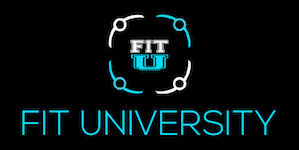February 26th – March 4th the National Eating Disorders Association will launch it’s 27th annual #NEDAwareness week.
NEDAwareness Week is about improving public understanding of the severity of eating disorders, as well as their causes and treatments. By spreading awareness and emphasizing early intervention NEDAwareness week connects individuals with the resources to get help sooner rather than later.
Get Involved with National Eating Disorder Awareness Week
Educating yourself further about eating disorders, discussing them with your peers, and even organizing a NEDA week event on your campus are great ways to spread awareness.
During the week, you can:
- Share facts and stats about eating disorders online.
- Follow social media campaigns on twitter and Instagram.
- For more information about getting involved in NEDAwareness week visit the Get Involved page on their website.
On my campus at Florida State University, we hold an annual Love Your Body Day during NEDA week that I have helped plan the past three years.
Each year it is a reminder to myself and my peers to love and honor our bodies, feed them for energy, and combat social pressures surrounding the ideal body. My involvement with this event has been one of my most rewarding college experiences so I challenge everyone to get involved this year in at least one way!
A central goal of NEDAwareness Week is to direct public to take a 3 minute confidential eating disorder screening to help individuals determine if it is time to seek professional help.
Intervening in the early stages of an eating disorder, such as when a person is initially exhibiting disordered eating patterns or thoughts, can prevent the development of a full-blown disorder.
Many individuals with eating disorders suffer for years without being treated and never fully recover. Early detection prevents years of struggle and improves the likelihood of recovery.
Understanding Eating Disorders
Eating disorders do not discriminate. They afflict individuals of all genders, races, and ages.
However, Anorexia Nervosa, a life threatening disorder characterized by self starvation and extreme weight loss, afflicts primarily women and girls (90 – 95%) and is one of the most common psychiatric diagnoses in young women.
Eating disorders are also the deadliest mental health illness with a mortality rate higher than that of schizophrenia or bipolar disorder.
Risk factors for all eating disorders include:
- Body dissatisfaction
- Low self-esteem
- Thin-ideal internalization
- Dieting
- Family social support deficits
If you think a friend or someone you know may be struggling with an eating disorder, some warning signs to look out for include:
- A marked increase or decrease in weight
- A preoccupation with weight, food, or dieting
- Development of abnormal eating habits
- Compulsive exercise
- Withdrawal from social situations
More information on signs and symptoms of specific eating disorders such as can be found here.
Social and cultural pressures glorifying the ideal body as thin and toned, and norms that place more value on one’s physical appearance than internal qualities strongly correlate to increased eating disorder prevalence.
To combat these pressures the National Eating Disorders Association emphasizes Losing the Three D’s: Dieting, Drive for thinness, and Body Dissatisfaction.
Consider starting a Body Project facilitator group on your campus, in which you would facilitate group sessions to help both male and female students resist sociocultural pressures to conform to the thin-ideal. No matter how you get involved, your efforts will make a difference in eating disorder awareness!
Sources:
- https://www.nationaleatingdisorders.org/
- www.bodyprojectsupport.org
Check out these articles too:
